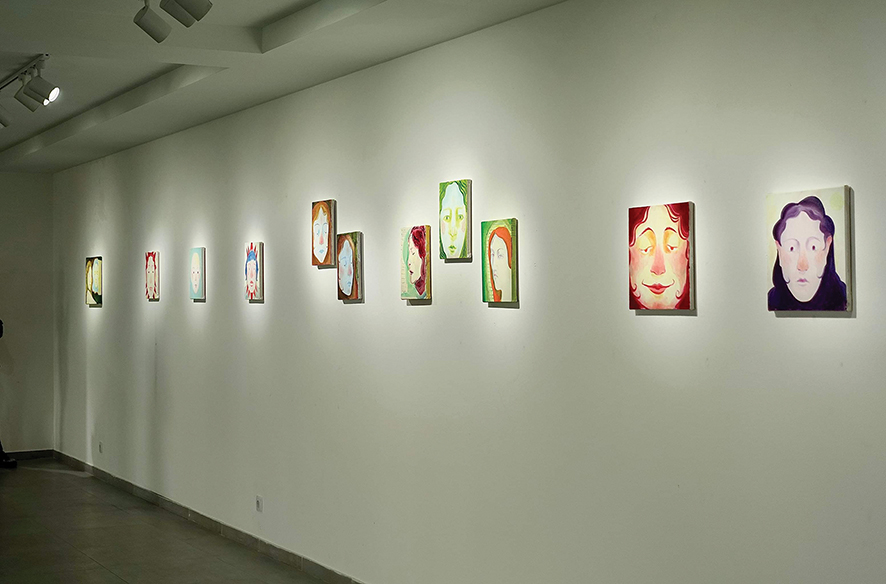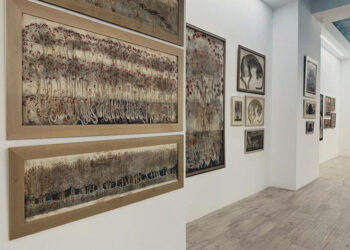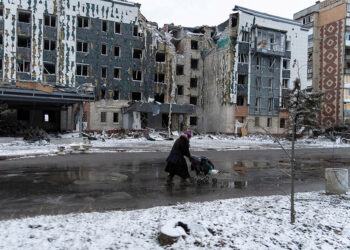Ria Keburia Foundation is very active in supporting independent artists and art-oriented institutions.
What is the mission and vision of the foundation and what are the main programs you are implementing?
The Ria Keburia Foundation has been operating since 2018. The mission of the foundation is to inspire and enrich the community through the promotion, support and celebration of Georgian art scene. The foundation aims to foster creativity, cultivate cultural appreciation, and provide a platform for artists to thrive and engage with diverse audiences. Our fund operates in the two main directions: First, it is an artistic residence, which is located in Kachreti, and the second direction is online Platform RIABID, where there are twenty Georgian contemporary artists United. The Ria Keburia A-i-R focuses on critical issues in contemporary art and everyday life.
Could you elaborate on some of the themes and issues that have been explored through the residency program?
In Kachreti, the foundation has a working studio, exhibition space and all condition for artists to feel comfortable and relaxed in the environment. The fund serves as a bridge for both Georgian and international artists. Often, international artists visit, create their works, and then have the opportunity to exhibit these creations in the Foundation’s gallery space. We also frequently announce open competitions, providing Georgian artists with the opportunity to travel to various European countries with funding and participate in artist residencies. We have already conducted exchange programs in several European countries, including France, Austria, Lithuania, and Italy. Currently, we have announced a competition for a residency in Portugal. Through this initiative, we promote intercultural dialogue and cooperation with European institutions.

Currently you have on view Salome Devadze’s Solo Show “Heads, Heads, Heads”. Can you share with us the collaboration process between Salome Devadze and Ria Keburia residency?
Salome Devadze received her education at one of America’s leading institutions, the Pratt Institute. She recently returned to Georgia, and as a young, aspiring artist, we found it intriguing to collaborate with her. We believe that young artists need more support at the beginning of their careers compared to those who are already established. Therefore, we offered Salome the opportunity to work for two weeks at the foundation’s residence. During her time at the foundation’s residence, she created 15 works, which were then exhibited in our gallery space. As visitors can observe through the show, Salome explores identity and femininity in her head series.
What was your vision and main aim while curating Salome Devadze’s exhibition?
As the curator of the exhibition, I found it fascinating to work with her. She works in a traditional medium, focusing exclusively on painting heads and faces. These faces are more than just self-portraits of the artist; they are generalized representations. Her series of head paintings began to take shape while she was still at the Pratt Institute. Through this series, she delves into the human subconscious, exploring the origin of essence within the heads she paints. Conveying this concept in artistic form is not an easy task. I believe the exhibition turned out to be quite interesting, although initially it posed a challenging task to showcase such a large number of portraits in a single space. However, in the end, the exhibition was well organized and effectively conveyed the artist’s intentions. Visitors can enjoy the exhibition until July 18th.
How does the foundation plan to continue supporting artists like Salome after their residency concludes?
After each project, we aim to ensure that our collaboration with the artist is not limited to a one-time occurrence. Instead, we strive to cultivate ongoing relationships and look forward to engaging in further interesting projects with Salome in the future. A highly effective method we utilize for maintaining these ongoing relationships is through closed auctions, which we host four times a year. Indeed, closed auctions provide an excellent opportunity for our artists to sell their works and establish new contacts. In this regard, I believe our relationship with Salome will continue to be engaging and fruitful.














